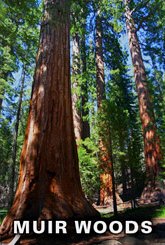
History of Wine country
History of Wine country
The Wine Country is a region of Northern California in the United States comprising of Napa, Sonoma and Mendocino counties. This part of the world is internationally renowned for wine-making and this region is often referred to as the wine country.
There are over 400 wineries in this area north of San Francisco and they are predominantly located in different valleys of the region - the Napa Valley in Napa County, the Sonoma Valley, Alexander Valley ,Dry Creek Valley, Bennett Valley, and Russian River Valley in Sonoma County.
Napa Valley is considered one of the foremost wine regions regions in the United States with a history dating back to the nineteenth century. Strangely, the salubrious Mediterranean climate, the geographic location of Napa Valley as also the local geology have proved conducive for cultivating high quality wine grapes.
Historical records reveal that John Patchett started the Napa Valley's first commercial vineyard in 1858 and three years later Charles Krug founded the Napa Valley's first commercial winery in St. Helena. Towards the close of the nineteenth century there were more than one hundred and forty wineries in the wine country.

In 1868 H. W. Crabb bought a huge piece of land near Oakville adjoining the Napa River and by 1877 had planted wine grapes in130 acres and was reportedly producing 50,000 US gallons of wine per year.
But thereafter it was bad times for Napa Valley vneyards as the area suffered many setbacks in the late 19th and early 20th centuries in a variety of ways - the outbreak of the vine disease called Phylloxera, the introduction of prohibition and the Great Depression. By 1920 many wineries were shut down and few that remained agreed to produce only sacramental wine.
But the the wine industry in Napa Valley had the resilience and soon overcame all the tribulations and people began to acknowledge that the wine country was capable of producing incomparably superior quality wine.

Tchelisticheff is known to have ushered in the modern era of winemaking in California during the year 1938. He introduced several innovative techniques and new methods and introduced Aging Wine, Cold Fermentation, Malolactic Fermentation etc. Brother Timothy also played a key role in the creation of the modern wine industry in Napa.
During1965, Robert Mandovi widely respected as the icon of the Napa Valley separated from his family's Charles Krug estate to launch his own winemaking operation in Oakville. It was arguably the largest winery to be established in the valley since prohibition after the coming into being of the Mondavi winery, the number of wineries in the valley grew at an enormous pace and the region acquired world renown.
Today, the wine industry in the wine country has assumed enormous demensions and features more than 450 wineries that grow many grape varieties. It is believed that Napa Valley draws around 4.5 million tourists each year, making it the most sought-after destination in California.
In the year 1982, Napa Valley was officially recognized as American Vitcultural Area (AVA) and ever since 13 sub AVAs have also been added. Extensive science research has taken place thereafter and it reveals that the extraordinary combination of convenient topography, conducive climate, the area's peculiar geology and a multiple variety of soil types lend the wine country a pre-emimnent place in the world's ine industry.
Follow Us:
Muir Woods and Sausalito

Muir Woods National Park is a tremendous addition to your San Francisco Tour experience.

Muir Woods is in Marin, CA
The stately coast redwoods at John Muir National Monument are awe-inspiring. They comprise one of the few old-growth stands of Sequoia Sempervirens left in California.





